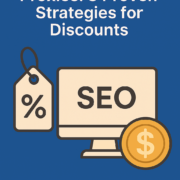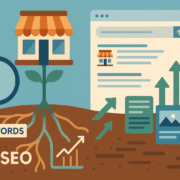The Importance of MVP Development in Product Lifecycle Management
In the fast-paced and ever-evolving world of startups and product development, businesses constantly strive to spray innovative products into the market quickly and efficiently. MVP development should be one of the most effective ways to achieve this. As for what an MVP is, an MVP, or Minimum Viable Product, is the simplest working version of a product that meets the central needs of its users while allowing businesses the opportunity to test their assumptions before taking the plunge and fully launching the product.
In this blog, we shall walk you through why MVP product development is important to product lifecycle management and, in so doing, helps businesses minimize risks, conserve resources, and create better product-market fit.
The Core of MVP Product Development
MVP development refers to building a functional product with minimum features required to attract early users. It is more about learning and iteration than achieving perfection. The MVP is a testing ground through which companies can validate their product assumptions based on real-life user feedback. It is through this iterative process entrepreneurs can ensure the end product meets market demands and satisfies user expectations, thus avoiding the risk of expensive failures.
Rather than spending months or years developing a comprehensive solution based on assumptions, MVP development services focus on building only what’s necessary to test core hypotheses about your product’s value proposition. This strategic minimalism allows businesses to:
- Validate market demand with real users
- Gather actionable feedback early in the development cycle
- Optimize resource allocation
- Adapt quickly to changing market conditions
- Reduce time-to-market
The Strategic Role of MVP in PLM
The MVP has a strategic function during every phase of the product lifecycle in the case of PLM:
- Ideation and Validation: An MVP facilitates validation of the product idea before investing heavily in it. Feedback from initial customers allows companies to establish if the idea will resonate with the desired market.
- Development and Prototyping: MVP software development targets creating a working prototype that exhibits the central value proposition. This enables fast iteration and refinement with user feedback.
- Testing and Launch: The MVP is the first launch to obtain real-world data and discover areas for improvement. MVP app development is significant in this step since users of mobile apps are quick to offer criticism.
- Growth and Optimization: Feedback from users collected through the MVP guides the creation of subsequent product versions with the aim of ongoing improvement and optimization.
- Maturity and Decline: Even during mature product phases, MVP concepts can be utilized to add new features or change the direction of the product to meet changing market needs.
Why MVP Development is Important in the Product Life Cycle
With the current fast-paced business landscape, businesses have to be able to test concepts rapidly, reduce risks, and deliver value to customers. MVP development matters in the product life cycle because it enables businesses to create solutions that meet real-world market demands.
- Verifies Product-Market Fit: An MVP enables companies to validate their core concept with actual users before significant investment in development. It assists in ascertaining if the product is satisfactory to customers.
- Minimizes Development Costs & Risks: Developing a complete product without validation is risky and costly. An MVP enables businesses to go live with minimal investment, reducing the risk of failure.
- Gains Time to Market: Speed is paramount in competitive environments.An MVP enables companies to enter the market promptly, receive feedback, and refine the product based on user comments.
- Focus on core features: Prioritizing the core features enables the creation of an MVP to sidestep, including extra features, and focuses on resolving the main issue effectively.
- Appeals to Early Adopters & Investors: An MVP in operation demonstrates the product’s potential, and it is easier to attract early adopters and investors who are willing to fund its development.
- Enables Continuous Improvement: Businesses can refine and repeat the product to succeed in the long run with real user feedback.
Key Indicators of MVP Success
The success of an MVP product development approach should be measured to ensure that the product is a hit with the users and is marketable. The following are some of the key indicators that help businesses measure their MVP software development work:
- User Engagement: Measures like active users, session duration, and retention rate define the frequency with which the users engage with the MVP. Higher engagement suggests that the product is of value to the users.
- Customer Feedback: Direct feedback, ratings, and reviews give qualitative feedback on user satisfaction and where improvement is needed. This aids in optimizing the MVP app development process.
- Conversion Rates: The rate at which users take desired actions (signups, purchases, or subscriptions) reflects the success of the product’s core features.
- Churn Rate: The rate at which users abandon the product after a first-time interaction points towards usability or value delivery problems. Lower churn rates indicate an effective MVP development process.
Navigating MVP Development Methodologies
- Concierge MVP: Providing the service manually to a limited set of users in order to get feedback.
- Wizard of Oz MVP: Emulating product functionality without implementing the backend.
- Single-Feature MVP: Addressing one major feature to try it out for viability.
- Landing Page MVP: Building a landing page to capture interest and gather email sign-ups.
Future of MVP Development & AI Integration
AI and automation shape the future of MVP software development so that companies can produce smarter, quicker, and more efficient products.
- AI-Powered MVPs: AI-powered capabilities such as personalized recommendations and automated customer care enhance user experiences from the beginning of development. This allows companies to tailor their offerings based on actual user behavior in real-time.
- No-Code & Low-Code Development: Tools such as Bubble, Webflow, and OutSystems are speeding up MVP app development so startups should build MVP first so it can release working products without heavy coding.
- Predictive Analytics: Insights powered by AI enable organizations to study user behavior, optimize MVP performance, and make evidence-based decisions on future iterations for a more optimized and market-oriented product.
With the continued development of AI, MVP development services will grow more agile and effective, and thus, the innovation cycles will speed up.
To Sum it Up
MVP app development is not about rapidly releasing a product but about ongoing learning, adjusting, and improving from actual user input. By adopting an iterative method, companies can reduce risk, maximize resources, and guarantee that their product resonates with market needs. Working with an experienced MVP development agency helps companies make this a reality, from ideas to scalable solutions. Using MVP development services leads the way to innovation, long-term success, and digital market competitiveness.




